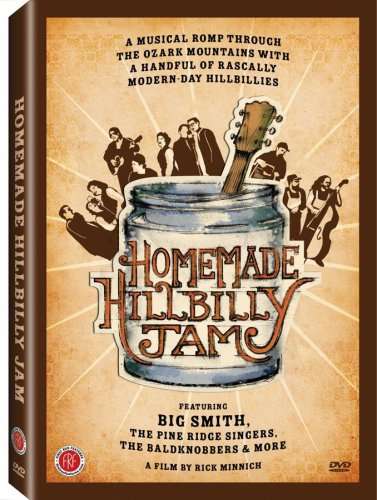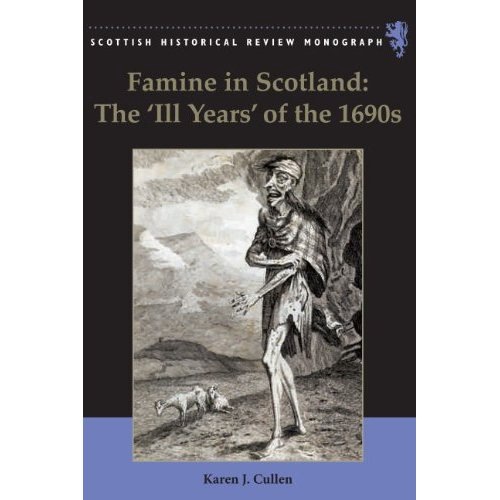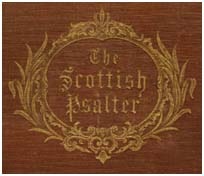This is the 2006 documentary about the Hamilton & Montgomery Settlement of 1606, "The Dawn of the Ulster Scots", made by Straightforward Productions. I was partially involved behind the scenes with this, and it turned into one of BBCNI's most watched programmes that year. A good and easy to follow summary of the story, presented by actress Flora Montgomery, a descendant of the original Montgomeries:
Tuesday, December 29, 2009
Nothing good on tv this Christmas? Here's something to fill 40 minutes!
Posted by Mark Thompson at Tuesday, December 29, 2009 0 comments
Labels: Hamilton + Montgomery, History, Media
Monday, December 28, 2009
"I’m 94 this mornin'"

Here's a poem my granda used to recite (that's him in the tank top in the pic above, probably aged about 15, with his three brothers and four sisters):
Ninety Four
I’m 94 this mornin', aye I’m 94 theday
I’m no' as young as I used tae be for I’m gettin' oul an' grey
But my heart is young and I’m fu' o' fun and I’m very pleased tae say
I’m getting mairried on Thursday tho' I’m 94 theday
Tae some folk doon in the village it will be a big surprise
The people think it’s a' a joke an' the minister’s tellin' lies
But we will hae a lauch at them as sure as you’re alive
For I’ll mebbe see a christenin' yit afore I’m 95!
Here's a recording of it from a Scottish folklife website; another by Will Fyffe, and a traditional English version from the British Library archives, recorded in Firle in Sussex (where Hilary's brother and family live).
.
Big Smith - "Homemade Hillbilly Jam" DVD
Hilary got me this DVD for Christmas - the trailer below is pretty good, but the full 80 minutes version is absolutely brilliant. The Bilyeu family of the Ozark Mountains (pronounced like "Blue") trace their origins to Ireland in the 1700s (let's face it, they MUST be of Ulster-Scots descent! There were folk called Blue who lived near our place when my da was a wee boy). Big Smith have been one of my favourite bands for years, introduced to me by my late friend Brian Richmond.
Aside from old hillbilly and gospel music, they've got a superb 42 track double cd of old childrens songs called "From Hay to Zzzzzz: Hillbilly Songs for Kids", and also write songs about essential household equipment:
...as well as old "Brother Duet" songs like this one which was written and first recorded by the mighty Louvin Brothers (clip below is Big Smith with a guest singer):
Check Big Smith out here, and buy their new 16 track CD "Roots, Shoots and Wings".
Sunday, December 27, 2009
Linties and Yellayoughs
Was talking with my parents this evening about the changes in local wildlife that they've observed over the years - and as ever some Ulster-Scots words came up naturally as part of the conversation. My da mentioned a man he knew when he was wee called Alec Stewart who used to spend his evenings going round the hedges to "blin linties" with a flashlight - he then grabbed them, put them in a bag and then took them home to one of his many cages. He then sold them on (or, during WW2, even ate them). Here's a linty (in English a linnet)
The yellayough (or yellayorlin or yellayowt / yellayite) was the Ards Peninsula name for the Yellowhammer
To make things even more confusing, apparently was even once a fish called the Portaferry Chicken! I googled it and sure enough it seems to have been a name for the sand smelt. This is the type of local knowledge that is still alive and well in rural communities across Ulster, has never been captured in academic textbooks or old historical volumes which were written by the smart folk, not the plain folk.
A huge amount of the future task for Ulster-Scots is not just in the ivory towers of universities, or the all-too-often trivial fluff of entertainment and media. It's in giving a respectful voice, and encouraging a sense of value, within the quiet communities whose lives have always been far removed from either of those fake worlds - and whose hearts still beat with the real thing.
Saturday, December 26, 2009
Friday, December 25, 2009
The Christmas Story in Scots, 1963
Matthew 2 v 1 - 15, from an old LP called "The Bible in Scots" by James L Dow (Waverley Records Mono ZLP2008), 1963:
Thursday, December 24, 2009
80,000 small Scotch adventurers
As we head towards 2010, the 400th anniversary of the Plantation of Ulster (to be specific, just the six western counties - because Antrim, Down and Monaghan weren't included), the anniversary presents an opportunity to either educate or entrench. I hope education wins. One of the important messages of the Plantation is of the relatively small numbers of people involved - in fact the post-1690 migration from Scotland to Ulster was far, far bigger. Here's something I read today:
"...Ulster continued to be the dangerous part of Ireland till after the war of the Revolution, when it was nearly colonized anew by the Scotch settlers and camp followers of King William's foreign forces. Eighty thousand small Scotch adventurers came in between 1690 and 1698 into different parts of Ireland, but chiefly into Ulster..."
from Prendergast's Ireland from the Restoration to the Revolution, 1660 to 1690, p 98 (published 1887)
I expect "small" doesn't refer to a race of pygmies, but 80,000 ordinary people with little or no money, who arrived here as refugees from famine in Scotland - the complete opposite of the 110 Plantation landlords who arrived here in 1610.
.
Wednesday, December 23, 2009
Radio Ulster "Seven Days" Christmas special
I was up at BBC Broadcasting House last night, as one of the four panelists (along with Dan McGinn, Austin Hunter and Clare Hanna) for the pre-recorded "Seven Days" review of the decade. It's being broadcast on Sunday. Thanks to Robbie for the invitation, and to David Dunseith for chairing it so well!
Monday, December 21, 2009
"Away in a Manger" and William James Kirkpatrick (1838 - 1921)
Sometimes called "Luther's Cradle Hymn", the world-famous "Away in a Manger" is one of the best known Christmas songs of Christ's birth. It was first published in Pennsylvania in 1885, but the tune that most people today know it by was written by William James Kirkpatrick, also in Philadelphia, around 1895. Some of the records of Kirkpatrick's family tree say that he was born in County Tyrone. I'll suggest that, as Ulster emigrants called Kirkpatrick who ended up as Methodists in Pennsylvania, it's highly likely that the family were Ulster-Scots. I must admit that I prefer the earlier tune, and I find the words a bit dubious in places, but Kirkpatrick's is definitely one of the best-known melodies in the world. Some of his other work is far superior.
Regardless of your opinion of the tune, once again Ulster-Scots is proven to not be some narrow oddball identity (as its opponents try to present it) - but one which has made a major contribution to mainstream cultural life in the western world for centuries.
Merry CHRISTmas!
Friday, December 18, 2009
Con O'Neill (15XX - 1618) - the first Ulsterman to be remembered on a gable wall?
Con O'Neill, head of the Clandeboye O'Neills, is a fascinating character. He was the last of the great clan to own the massive areas of Upper Clandeboye, Lower Clandeboye and the Great Ards - which stretched from almost Ballymena to Killyleagh and included the whole of north Down and the Ards Peninsula. I was recently sent a superb article about his estate, and how it was sold off townland by townland.
Con's lifetime saw the end of old medieval Anglo/Irish Ireland and the emergence of a new modern Ulster with Scotland at the centre of Ulster's development.
A clear message of Con O'Neill's life is just how much co-operation there was in east Ulster between him and the lowland Scots, when he traded two thirds of his estate with the Scots Hugh Montgomery and James Hamilton. The legal documents of the sale of Con's estate are fascinating records, and prove beyond all doubt that the three men worked in close co-operation with each other.
In particular, Montgomery and O'Neill had a close friendship. After all, it was Montgomery who sprung Con from Carrickfergus Castle, it was Montgomery who secured the Royal pardon for Con in London, and the two men travelled back to Ulster together via Edinburgh.
On 24 December 1605 O'Neill and Montgomery signed "Articles of Agreement" with each other, within which "the parties covenant not to injure each other, but to aid and assist and defend each other and their tenants from wrong". They agreed to hold joint inquiries if any disagreements arose between their tenants, backed by a financial commitment of £1000 to each other, all written in the language of the Scottish laws of the time.
During his latter years Con moved from his grand castle of Castle Reagh to Ballylenaghan / Knockbracken (around 1608), and then to the lower tip of the Ards Peninsula to the remote townland of Tullycarnan (around 1616). Con died around 1618, and was said to have been buried at the old church of Knockcolumbkille, which was situated in what is now Glenmachan or Garnerville in east Belfast. A while ago I found an 1800s drawing of what was claimed to be Con's gravestone, which at that time had been built into the gable wall of a local farm building. It's probably long-gone by now. But it's an ironic Ulsterism that he ended up on a Belfast gable wall!
Con's old estate was in Antrim and Down - two of the counties which weren't included in the "official" Plantation - because by the time it got underway both counties already had a huge Scottish population. Of course you get the usual tiresome old story of "Planter and Gael", a stereotype narrative which seeks to pitch two peoples (incomers and natives) against each other, and which airbrushes away the uniqueness of the Scottish contribution to Ulster by lumping the Scots in with the English settlers. I suspect there's going to be a lot of that over the next few years, with the 400th anniversary of the beginning of the Plantation of Ulster in 2010.
But we don't need to reinforce old selective myths and thereby fuel old hostilities. We need to return to the primary sources, the landscapes, the places, the buildings and the artefacts - and look afresh at them to find a newer, fuller, story to tell.
......
"...The Scots are a middle temper, between the English tender breeding and the Irish rude breeding, and are a great deal more likely to adventure to plant Ulster than the English..."
King James I
Thursday, December 17, 2009
Remember 1690?
I took the family out last night for a bite to eat in Donaghadee. The bill came to £16.90. The studenty type young man at the till noticed my wry smile when he told me the total.
"Interesting number!" I said to him.
He looked at me blankly, with a puzzled expression.
He had no idea of the number's significance. It made me wonder - if younger people these days don't even know the BIG dates in Ulster history, it shows how much work is required in explaining our lesser-known stories to today's generation.
Wednesday, December 16, 2009
The windfarm in Galloway, Scotland
I've blogged about this before back in the summer. Here's an amazing pic taken this afternoon as the sun was going down of the windfarm in Galloway. I made a point of shooting this with the Ards Peninsula sand in the foreground (ie, not a massive zoom lens) to show you the real view that was visible earlier today. My grandfather, William Thompson, used to sail across to visit folk he knew who lived along that coastline on a wee bay called the Clan Yard. Click to enlarge
Tuesday, December 15, 2009
From the Ards to Galloway - 9.30am this morning
Posted by Mark Thompson at Tuesday, December 15, 2009 0 comments
Labels: Ards Peninsula, Close Coastlines
Sunday, December 13, 2009
Churches and technology: the ultimate hand-held device
 (New touch-screen iPod shown left) I have a few gadgets - my iPod is being used more now, the Blackberry is great, we have 3 computers in the house and my digital camera is a wee gem. Most of my tech is needed for the type of work I do, and as an Apple user, I take a bit of stick from people about my gadgetry. Most churches have by now invested a fair bit of money in technology - sound systems and of course the ubiquitous Powerpoint with projector and a variety of screens. But the new technology (far from making life easier) creates a whole new workload. How many man/woman hours are being spent worldwide every week in teaching people how to use the equipment, and in preparing church powerpoint presentations? It must be billions.
(New touch-screen iPod shown left) I have a few gadgets - my iPod is being used more now, the Blackberry is great, we have 3 computers in the house and my digital camera is a wee gem. Most of my tech is needed for the type of work I do, and as an Apple user, I take a bit of stick from people about my gadgetry. Most churches have by now invested a fair bit of money in technology - sound systems and of course the ubiquitous Powerpoint with projector and a variety of screens. But the new technology (far from making life easier) creates a whole new workload. How many man/woman hours are being spent worldwide every week in teaching people how to use the equipment, and in preparing church powerpoint presentations? It must be billions.
Well, I have discovered something that makes Powerpoint obsolete. No longer is there any need to type in (or search the internet looking for) the words of this week's hymns and choruses - which are then copied-and-pasted into Powerpoint slides.
I used to think the iPod was clever. Well, it has been superceded! Allow me to introduce you to the ultimate in hand-held devices:
1) It holds around 1000 hymns and choruses
2) Low unit cost, so cheap to replace if damaged - and no need for batteries or power source
3) Everyone is given their own device at the start of the service
4) Every person in the congregation can, in seconds, call up the words to the hymn about to be sung
5) No need to strain to see the projector or plasma screen, the words are right there in the palm of the hand
6) No need to cringe at unsuitable clip-art or wacky graphics - this device uses classic typography designed for both legibility and reverence
7) It allows for the spontaneous selection of any of the 1000 songs, so there's no risk of extinguishing on-the-spot inspiration
8) Should anyone be particularly moved by the words, they can choose to keep these words before them for a few precious moments of reflection
9) The hymns are usually organised by theme, allowing for co-ordinated singing quickly and easily
10) Depending on eyesight standards, the user can even adjust the distance at which they hold the device, in an instant
11) Different versions available, depending on your congregations denominational/theological emphasis.
12) None of the common problems of tech compatibility
13) Every version of this device has been ergonomically designed for ease of use, regardless of age, gender or ethnic origin of the user
...all of which dramatically reduces the weekly workload of this week's "worship leader", and might make a church service run more smoothly and less prone to embarrassing and disruptive tech failure.
Ladies and gentlemen, you are just a click away from the answer you've been waiting for... the ultimate hand-held device! (click here)
Friday, December 11, 2009
A bit of country wisdom
Robin told me this story - of an old man called Charlie Gill who lived out near Saintfield. He had a few slates missing from his house roof, but he never got them fixed. When he was asked about this by visitors he used to say something like:
"When it's rainin' it's too wet to do it, and on a dry day I don't need it done".
Tuesday, December 08, 2009
Andrew Melville and the Ulster Scots
In the course of various things I've been reading recently, there's an emerging strain that connects some of the most influential early lowland Scots in Ulster right back to the Reformation, and in particular via Glasgow University.
• Andrew Melville (photo of his statue in Stirling shown above, taken back in 2008) was John Knox's successor and a giant of his times, a Scot who spent time in France and Geneva as the Reformation soared. He "acquired European fame as an outstanding scholar in the literary world". By the time Melville reached the continent, John Calvin was dead, but Melville developed a close friendship with one of Calvin's closest associates, Theodore Beza. Andrew Melville came back to Scotland in 1574, becoming the Principal of Glasgow University. Melville blended his intellectual genius with spiritual leadership when he became the Moderator of the (Presbyterian) General Assembly in 1582. He famously humiliated King James VI by saying "Sirrah, ye are God's silly vassal; there are two kings and two kingdoms in Scotland: there is king James, the head of the commonwealth; and there is Christ Jesus, the king of the Church, whose subject James the Sixth is, and of whose kingdom he is not a king, not a lord, not a head, but a member." James never forgave him.
• 1605: Two of Andrew Melville's students were the architects of the first big Ulster-Scots settlement: - two Ayrshire Scots, Sir James Fullerton and Sir James Hamilton were at the centre of the land-deal with Irish Gaelic chieftain Con O'Neill of Clandeboye. Fullerton had been a student of Melville's at Glasgow University (described in McCrie's Life of Andrew Melville as "one of his most intimate and steady friends") and Hamilton was believed to have been one of Melville's students at St Andrews.
• Hamilton and Fullerton had arrived at Dublin in 1587 and set up a school. A few years later they were both made fellows of Trinity College Dublin where they influenced and educated the young James Ussher*, the future Archbishop of Armagh. It has been said of Ussher that "in his earlier life he held rigidly the opinions of Calvin" (reference here), no doubt passed down to him by Hamilton and Fullerton, both of whom had been trained by Andrew Melville.
• 1606: Melville imprisoned / the settlement begins - By this stage King James VI of Scotland had become even more powerful, having also become King of England and Ireland in 1603. In 1606 he summoned Melville and some other Scottish ministers to London, where Melville vigourously protested against the King's ambitions to become head of the Church. Melville argued that a free General Assembly was essential - so the king had him arrested and imprisoned in the Tower of London for four years. It is hard to imagine the effect that the loss and vindictive persecution of a man like Melville would have had on Presbyterian Scotland. That same year the General Assembly had its first experience of what was described as 32 years of "kingly interference". 1606 was of course also the year that the aforementioned James Hamilton, and Hamilton's Ayrshire neighbour and rival Hugh Montgomery, began the large-scale permanent lowland Scots settlement of east Ulster. And as increasingly anti-Presbyterian laws were being regularly passed in Scotland in the early 1600s, the migration of Scots to Ulster grew stronger and stronger. A flow of young ministers followed the flow of people.
• 1606 - 1623: Glasgow University after Melville: Melville never returned to Scotland (after being released from the Tower he was forced into exile in France for the rest of his life) but his intellectual and spiritual legacy lived on. He was succeeded at Glasgow University by Thomas Smeaton (who had been in Geneva with Melville in the 1570s) and later by Robert Boyd. Boyd appointed a young Ayrshire graduate called Robert Blair to be Regent of the University. Blair would later become renowned in Ulster-Scots history as the minister at Bangor and the effective leader of the Ulster-Scots. At Glasgow, Blair's students included a James Hamilton (future minister at Ballywalter) and John Livingstone (future minister at Killinchy). During Blair's time at the University, one of his professorial colleagues was David Dickson, who later became minister at Blair's home town of Irvine in Ayrshire, and who was involved in the famous revival at nearby Stewarton. At exactly the same time Blair, Hamilton (and later) Livingstone were at the centre of the simultaneous Ulster revival just across the North Channel, centred around Sixmilewater.
• 1623 to the 1660s: The three young ministers and Glasgow graduates Blair, Hamilton and Livingstone became three of the most important figures in Ulster-Scots / Scots struggle of the Covenanters against the interference and opposition of the state against the will of the people - an experience which forged a Scottish migration into a solid Ulster-Scots community. All three stood against the increasingly tyrannical crown, all three were onboard Eagle Wing, after which all three returned to Scotland - where they played a central role in church and community life until their deaths.
• Melvilles in Ulster: According to the Montgomery Manuscripts, Melvilles who were descended from Andrew's brother James began to arrive in County Down, from Fife, around 1610 - in fact, a Jane Melville married William Hamilton of Newcastle in the Ards Peninsula, a younger brother of Sir James Hamilton.
Perhaps these Melvilles were just following the path which their ancestor Andrew Melville had laid the foundations for.
(* for more information about James Ussher, Crawford Gribben's book is hard to beat!)
Posted by Mark Thompson at Tuesday, December 08, 2009 1 comments
Labels: Biography, Covenanters, Faith, History
Sunday, December 06, 2009
A rhyme from my aunt Betty
Betty collared me at the meeting in Carrowdore Mission Hall this evening, to tell me this wee rhyme she remembered:
Gracious and glorious, a hern amang 4 o' us
Little enough for 3 o' us
No enough for 2 o' us
An yin cud eat it a'
It's a joke grace of some sort - have you ever heard it before?
Friday, December 04, 2009
1625 Revival in 1859
Here are two verses from a poem I found recently about the 1625 Sixmilewater Revival, from a book published in 1859:
When God would plant our goodly vine within this land, of yore,
A people suffering for the truth He guided to our shore:
From Scotland's rugged land they came, a stern and stalwart race;
They came from England's clime, less used danger and toil to face.
Where Neagh and Strangford wide expand, by Carrick's castled town,
Where Foyle and Lagan ebb and flow,- the pilgrims sate them down.
And through long years of struggle sore, as erst their fathers prayed,
They joyed that they were free to pray, with none to make afraid !
When God would plant our goodly vine within this land, of yore,
A band of exiled ministers, brave men, He hither bore;
Dunbar and Stewart, Robert Blair, in sacred lore who shone,
James Hamilton of noble blood, and honoured Livingstone,
And Brice, and holy Cunningham, and Welsh from Scotland came
While Henry Colvert, Hubbard, Ridge did bear an English name.
Long ages past these valiant men have gained the crown on high,
But though long dead, their work remains - their work will never die !
Sometimes the first isn't the most important.
- The first permanent English settlement in America was founded in 1607 at Jamestown, yet the event which has the big annual festivities, Thanksgiving, marks the later arrival of the Pilgrim Fathers on the ship The Mayflower.
- Here, many people look to Patrick and a variety of early "saints" as being the first ones to bring Christianity to Ireland. Maybe that is technically true... but perhaps the event which should be commemorated is the arrival of Brice, Blair, Cunningham et al in the early 1600s. Perhaps these were the men who brought the simple Reformed gospel to Ireland.
This year, Edinburgh is hosting a number of Reformation-themed events during the New Year festivities of Hogmanay. I am fairly sure than John Knox would be appalled by this, but perhaps this might mark a turning point - one where the influence of the Reformation upon Scotland is being acknowledged in mainstream culture for the first time in many a generation.
It was 1606 when the first obvious "kingly interference" struck the General Assembly of the Kirk in Scotland. It was May 1606 when the first large-scale migrations from Scotland to Ulster began. Maybe this should be our very own Thanksgiving.
Tuesday, December 01, 2009
Wordia in Northern Ireland!
Wordia.com, the visual dictionary, are over here this week filming a series of videos about different people's definitions of particular words. As yesterday was St Andrew's Day, that's the theme for the week. Here are a couple of videos already online.
As Ulster-Scots speech is fundamentally about vocabulary, I'd like to see what the Wordia guys could do with that as a subject - getting definitions of all of the classic words would not only be good fun, but also would be a great way for the older generation to pass on words to the younger web-savvy youth. So maybe technology can positively affirm regional identity, rather than erode it?
The Ulster fingerprints on the 1650 Scottish Psalter

A Psalter is a book of Psalms to be sung in churches, arranged in meter to suit particular tunes. Growing up in the gospel hall and mission hall world - where there was a fair bit of time spent speculating about the future rather than understanding the past - we didn't use a Psalter, we used the Believers Hymnbook on Sunday morning and Redemption Songs the rest of the time, both of which were full of centuries-old hymns, as well as other more recent ones from the late 1800s and early 1900s. However I was struck to discover that the 1650 edition of the Psalter remained as the standard until it was revised in 1929.
When the 1650 edition was being prepared, the Church of Scotland appointed a group of six ministers to review the work. First on the list (recorded on p 288 of Treasury of the Scottish Covenant) is James Hamilton of Ballywalter, who at this time was ministering in Edinburgh. Also among the six were Robert Trail (whose brother William was a minister at Ballindrait in Donegal) and Hew McKail (whose father Matthew had been in Ulster in early 1644 - but I can't find my reference to this at the moment).
The critics of Ulster-Scots usually focus on the Plantation of Ulster of 1610 and infer it was a one-way single event from which all of the subsequent ills of Ireland have grown, usually with the subtext of alleged invasion and dispossession of the native Irish. In the Plantation (in addition to other allocations to "servitors", the church and the London companies) 59 Scots were granted 81,000 acres / 51 Englishmen were granted 81,500 acres / 280 Irishmen were granted 94,000 acres.
However, the reality is that there has been an ongoing two-way flow for (at least) four centuries between Scotland and Ulster. Even today, a quick spin down my Facebook friends list shows that a lot of people I went to school with ended up settling in Scotland. The 1650 Psalter is another example of this exchange, with clear Ulster fingerprints on its' production.
PS: There's a chronology of the Psalter here on Wikipedia and an excellent in-depth article here by Rev David Silversides of the Reformed Presbyterian Church in Loughbrickland, County Down
Posted by Mark Thompson at Tuesday, December 01, 2009 0 comments
Labels: Covenanters, Faith, History




